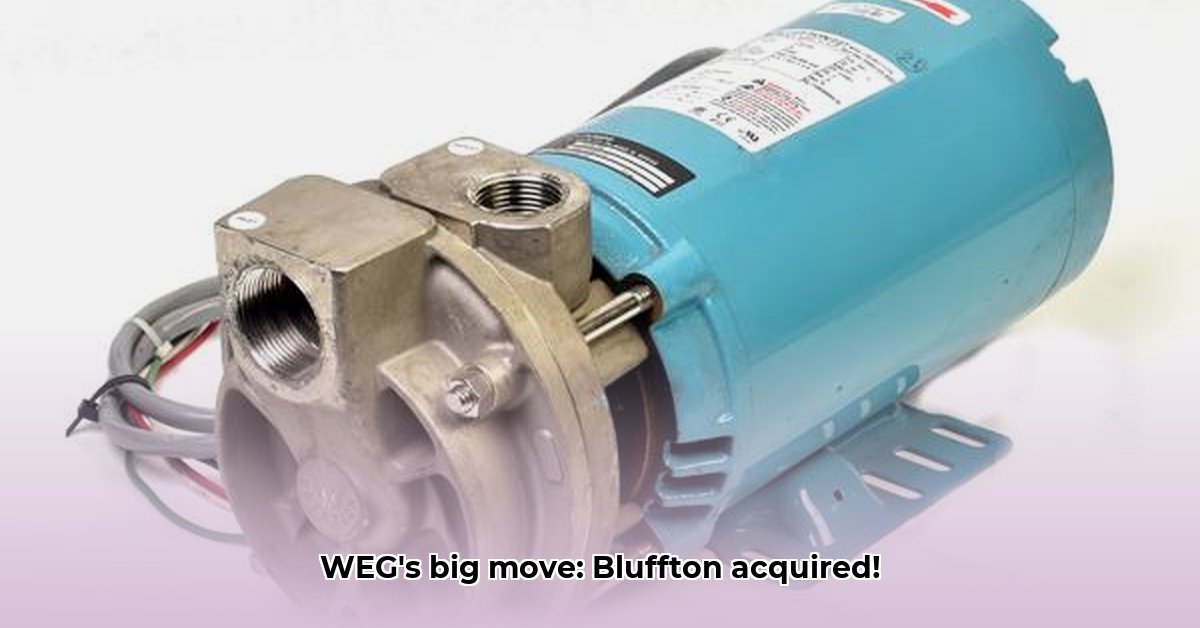
Bluffton Motor Works: A Strategic Acquisition for WEG's US Growth
WEG's acquisition of Bluffton Motor Works represents a significant strategic move, bolstering its presence in the crucial North American market for small electric motors. This acquisition, announced in [Insert Date if available], is not merely an expansion of WEG's portfolio; it's a calculated play to significantly enhance market share and technological capabilities within a highly competitive landscape. This analysis will explore the strategic rationale behind the acquisition, assess its potential benefits and challenges, and project its long-term impact on WEG, its competitors, and the broader industrial automation sector. The acquisition of Bluffton, a company generating $64 million in revenue in 2015, provides immediate access to a significant portion of the North American market.
Synergies and Strategic Fit: A Powerful Combination
Bluffton Motor Works specializes in the design and manufacturing of custom-engineered fractional horsepower electric motors (motors with outputs under 5 horsepower), supplying a diverse range of industries including food processing, HVAC, and material handling. This niche market represents a previously underserved segment for WEG, a global leader in larger industrial automation components. The acquisition directly addresses this gap, providing immediate access to a well-established customer base and a highly skilled workforce.
The synergy between WEG and Bluffton is substantial. WEG's global supply chain, advanced engineering expertise, and robust distribution network can significantly enhance Bluffton's operational efficiency and scalability. This integration promises to unlock cost savings, boost production capacity, and accelerate product innovation. Furthermore, Bluffton's established presence and customer relationships in North America provide a crucial springboard for WEG's continued expansion within this key market.
Navigating the Integration Challenges: A Cautious Approach
While the strategic advantages are clear, the integration process presents significant challenges. Combining two distinct corporate cultures, operational systems, and potentially overlapping roles requires meticulous planning and execution. "The successful integration of Bluffton's operations into WEG's larger structure will be critical to realizing the full potential of this acquisition," notes Dr. Anya Sharma, Professor of Strategic Management at the University of Illinois. Careful workforce management will be essential to minimize disruption and retain Bluffton's highly skilled employees, whose expertise is vital for maintaining production quality and customer relationships.
Assessing the Long-Term Financial Impact: A Multifaceted Analysis
Determining the long-term financial implications of this acquisition requires a multifaceted approach that extends beyond simply adding Bluffton's revenue to WEG's existing figures. A comprehensive analysis must consider several key factors.
- Synergy Realization: The extent to which WEG successfully integrates Bluffton's operations and achieves cost savings through shared resources and economies of scale will significantly impact profitability.
- Market Share Gains: Tracking WEG's market share changes following the acquisition is crucial to assess the deal's effectiveness in enhancing its competitive position, particularly against rivals such as ABB.
- Return on Investment (ROI): A thorough ROI analysis, considering the acquisition cost, integration expenses, and revenue growth, will provide a clear picture of the financial viability of the acquisition.
- Competitive Response: Analyzing competitors' reactions to WEG's increased market presence is important for accurately predicting future growth trajectory. Aggressive responses could put pressure on pricing and margins.
Stakeholder Impact and Future Outlook
The acquisition has implications for various stakeholders: WEG sees expanded market reach and enhanced product offerings; Bluffton employees face opportunities for career development within a larger organization, accompanied by potential restructuring; customers can expect to benefit from enhanced product reliability and access to a wider range of products; and competitors may face increased competition, necessitating strategic adjustments to maintain their market positions.
The long-term success of this acquisition hinges on effective integration, strategic adaptation to market dynamics, and a sustained commitment to innovation. The potential for significant upside is undeniable, but careful management and diligent monitoring will be crucial in navigating the integration challenges and realizing the full potential of this strategic investment. Ongoing evaluation using the framework outlined above will be vital in assessing the long-term impact of WEG's bold move to expand its presence in the North American market for small electric motors.